July 31 to Aug. 6
To the Qing Empire, they were fan (番), or barbarians. The Japanese called them the Takasago, or high mountain people. And the Chinese Nationalist Party referred to them as shanbao (山胞), or mountain compatriots.
In late 1984, the Aborigines of Taiwan decided that they would no longer bear the designation handed to them by the colonizers. On Dec. 29, a group of 23 Aboriginal and Han Chinese intellectuals got together and formed the Taiwan Aboriginal Rights Association (台灣原住民權利促進會), with one of their demands being that the government officially call them yuanzhumin (原住民, or original inhabitants), which is the term used today.
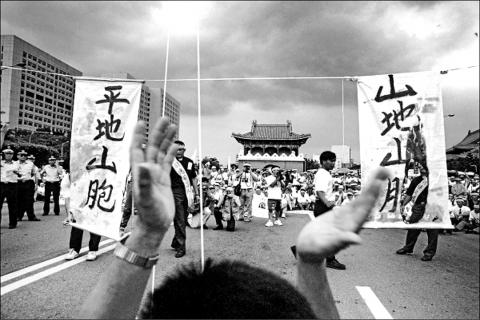
Photo courtesy of Hsieh San-tai
“The organization was the first one that included the term ‘Aborigine’ in its name,” writes Icyang Parod in the book, Compilation of Historical Material on Taiwan’s Aboriginal Movement (臺灣原住民族運動史料彙編). Now minister of the Council of Indigenous Peoples, Icyang was a key figure in various early Aboriginal movements.
It seemed like a simple and harmless request, but the process took almost 10 years. On Aug. 1, 1994, National Assembly finally granted the request along with an article in the constitution to protect indigenous rights. Aboriginal activists continue to fight for various issues today, but the rectification of their designation was seen was seen as a major victory to a long-mistreated people. Since 2005, Aug. 1 has been observed in Taiwan as Indigenous Peoples’ Day.
A PURE NAME
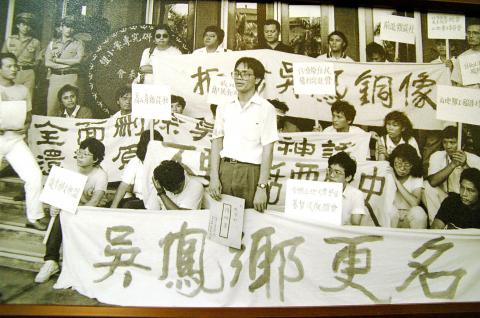
Photo: Hsieh Wen-hua, Taipei Times
In 1983, along with two other Aboriginal National Taiwan University students, Icyang launched the publication High Green Mountain (高山青), which highlighted the danger of Aboriginal cultural extinction and called for Aborigines to start a self-help movement.
“Through looking at their own situation, they hoped to awaken an Aboriginal consciousness,” Iwan Nawi writes in the book, Taiwan’s Aboriginal Movement at the Legislative Yuan (原住民運動與國會路線). “Although this consciousness originated on campus, it quickly spread through the urban Aboriginal population as well as urban mainstream society.”
Icyang writes that the Aboriginal Rights Association was originally to be named “High Mountain Tribe Rights Association” (高山族權利促進會), but a month before the organization launched, current Kaohsiung Bureau of Education Director Fan Sun-lu (范巽綠) proposed that they use the term Aboriginal instead. The term was formally adopted after an intense debate during the organization’s first meeting.
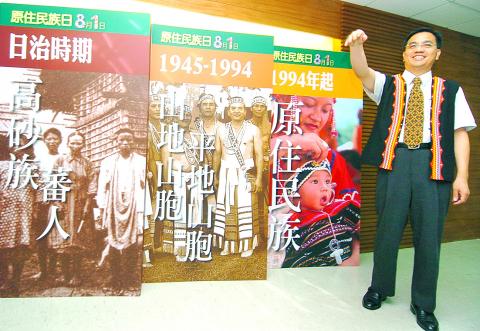
Photo: Lu Chun-wei, Taipei Times
“It was a pure term because it had never been officially used before,” Icyang writes. “The use of the term symbolizes the fact that our organization not only sought to resolve tangible Aboriginal social issues, it also fought for our status as well.
“We not only want to have our people identify with being Aborigines, through the term we also want to let the Han Chinese know that this land originally belonged to us. We will not dwell on the methods through which they obtained this land, but they should at least respect our rights and status.”
The newly-formed Democratic Progressive Party (DPP) supported the movement, using the designation in its party constitution written in 1986. The same year, the Presbyterian Church also officially adopted the designation, and usage spread among the church’s roughly 80,000 Aboriginal members.
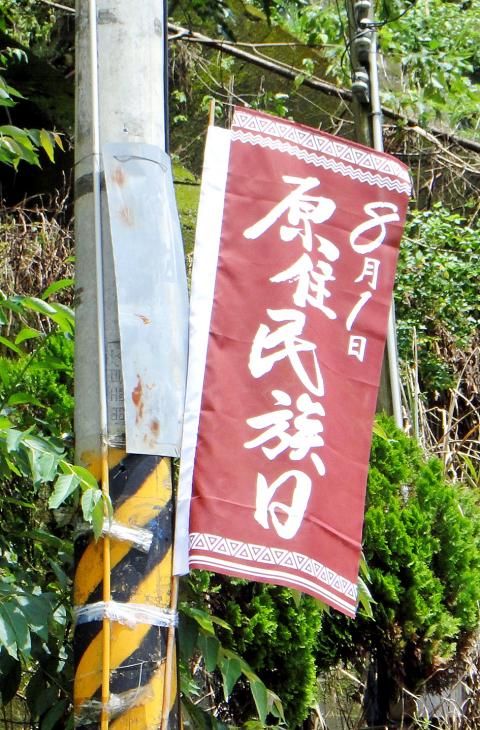
Photo: Taipei Times
CONSTITUTIONAL CHANGE
But the push for the government to formally eliminate “mountain compatriots” in favor of “Aborigines” did not take shape until 1991.
That year, the National Assembly convened to amend the constitution. One of the agenda items concerned guaranteed seats in the Legislature for “mountain compatriots.” If passed, this would be the first time the hated designation appeared in the constitution.
Icyang and other protestors marched to the National Assembly meeting grounds at Yangmingshan’s Zhongshan Hall, and after being blocked by security several times, managed to deliver their petition. They made several requests, but Icyang says that the designation change was the only one reported by the media. To his dismay, no action was taken.
The National Assembly convened again to amend the constitution a year later, and this time more than 1,000 protestors marched to Zhongshan Hall. Icyang writes that the ruling Chinese Nationalist Party (KMT) was hesitant to designate the Aborigines as the original owners of the land, because that would imply that the Han Chinese were a foreign people and the KMT a foreign regime, leading to further problems. The National Assembly then suggested zaozhumin (早住民, or earlier inhabitants) or xianzhumin (先住民, or first inhabitants), which the activists deemed unacceptable.
By the end of the session, Icyang and his people remained “mountain compatriots.”
The DPP backed the Aborigines during the constitution amendment session of 1994. In April, then-president Lee Teng-hui (李登輝), who had opposed the designation change in 1992, publicly addressed the “mountain compatriots” as Aborigines in a speech. This likely prompted the reticent KMT to add the designation change to their agenda as well.
In June, 3,000 people marched for Aboriginal rights. A month later Lee promised Aboriginal activists that they would get their wish. The assembly voted 196-63 in favor.
Taiwan in Time, a column about Taiwan’s history that is published every Sunday, spotlights important or interesting events around the nation that have anniversaries this week.

A jumbo operation is moving 20 elephants across the breadth of India to the mammoth private zoo set up by the son of Asia’s richest man, adjoining a sprawling oil refinery. The elephants have been “freed from the exploitative logging industry,” according to the Vantara Animal Rescue Centre, run by Anant Ambani, son of the billionaire head of Reliance Industries Mukesh Ambani, a close ally of Prime Minister Narendra Modi. The sheer scale of the self-declared “world’s biggest wild animal rescue center” has raised eyebrows — including more than 50 bears, 160 tigers, 200 lions, 250 leopards and 900 crocodiles, according to

They were four years old, 15 or only seven months when they were sent to Auschwitz-Birkenau, Bergen-Belsen, Buchenwald and Ravensbruck. Some were born there. Somehow they survived, began their lives again and had children, grandchildren and even great grandchildren themselves. Now in the evening of their lives, some 40 survivors of the Nazi camps tell their story as the world marks the 80th anniversary of the liberation of Auschwitz-Birkenau, the most notorious of the death camps. In 15 countries, from Israel to Poland, Russia to Argentina, Canada to South Africa, they spoke of victory over absolute evil. Some spoke publicly for the first
Due to the Lunar New Year holiday, from Sunday, Jan. 26, through Sunday, Feb. 2, there will be no Features pages. The paper returns to its usual format on Monday, Feb. 3, when Features will also be resumed. Kung Hsi Fa Tsai!
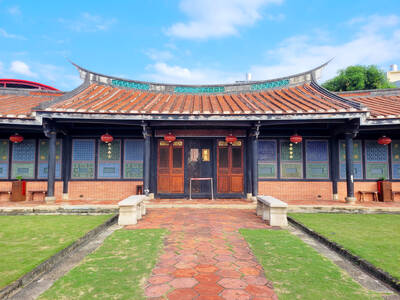
When 17-year-old Lin Shih (林石) crossed the Taiwan Strait in 1746 with a group of settlers, he could hardly have known the magnitude of wealth and influence his family would later amass on the island, or that one day tourists would be walking through the home of his descendants in central Taiwan. He might also have been surprised to see the family home located in Wufeng District (霧峰) of Taichung, as Lin initially settled further north in what is now Dali District (大里). However, after the Qing executed him for his alleged participation in the Lin Shuang-Wen Rebellion (林爽文事件), his grandsons were